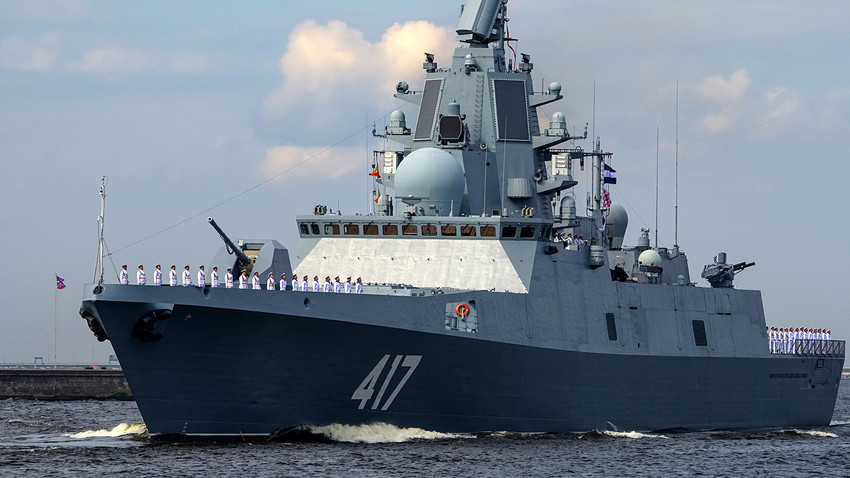Why is Russia’s new era ‘scientific’ ship armed up to the teeth with cruise missiles?

The Admiral Gorshkov frigate during the final rehearsal of the naval parade to celebrate Russian Navy Day in Kronstadt.
Alexei Danichev/SputnikIn 2006 Russia planned to incorporate all its latest technologies into its 22350 ship project. The vessel was initially designed to be a scientific ship for studying the world’s oceans but it’s also been used for testing the country’s newest military naval systems.
However, when the economic crisis hit Russia in 2008, the government decided to write off the project’s scientific duties and reclassify 22350 to a military function.
So the first ship of the Admiral Gorshkov series is now effective against targets both above and under the water, can take out enemy forces with precise missiles, and do reconnaissance missions.
“Since the very
But as he noted, in the
Weapons and features
According to
These rockets can hit targets at distances of up to 2,500 km and travel 20 meters above ground, skirting across the terrain loaded with 450 kg warheads. Experts say these types of missiles are a new type of deterrence weapon which can be used as an alternative to nuclear missiles.
At the moment the Russian military is battle testing the naval version of the notorious Pantsir-S1
The ship is also
“This frigate has numerous computer systems that can do most of the work previously done by humans. They include navigation and operating the ship’s weapon and intelligence systems,” mentioned the expert.
The vessel can reach 30 knots (around 30 mph) and cover up to 4,000 sea miles on a single tank. It requires a crew of about 200 to run all systems.
Future of the project
On Feb.26 the Defense Ministry ordered four ships for the 22350 project. They are expected to be part of the fleet by the end of 2022.The MoD has also pumped more money into the further development and modernization of the project.
As Murakhovsky noted, the country needs at least 12 more ships of this type to defend the country’s sea routes and borders.
If using any of Russia Beyond's content, partly or in full, always provide an active hyperlink to the original material.
Subscribe
to our newsletter!
Get the week's best stories straight to your inbox